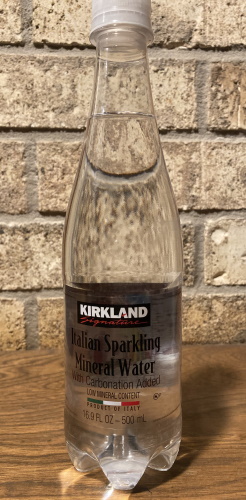A few days ago I wrote about my experiment with a wine bottle and a beer bottle. I blew across the empty bottles and measured the resulting pitch, then compared the result to the pitch you would get in theory if the bottle were a Helmholtz resonator. See the previous post for details.
Tonight I repeated my experiment with an empty water bottle. But I ran into a difficulty immediately: where would you say the neck ends?

An ideal Helmholtz resonator is a cylinder on top of a larger sphere. My water bottle is basically a cone on top of a cylinder.
So instead of measuring the neck length L and seeing what pitch was predicted with the formula from the earlier post
I decided to solve for L and see what neck measurement would be consistent with the Helmholtz resonator approximation. The pitch f was 172 Hz, the neck of the bottle is one inch wide, and the volume is half a liter. This implies L is 10 cm, which is a little less than the height of the conical part of the bottle.

Now repeat with a Scotch bottle.
I find it impossible to establish resonance in the moments after the bottle becomes empty.
Could this be due to residual vapors?